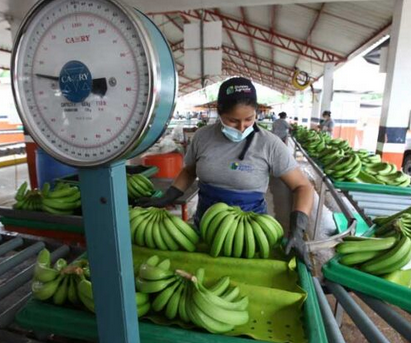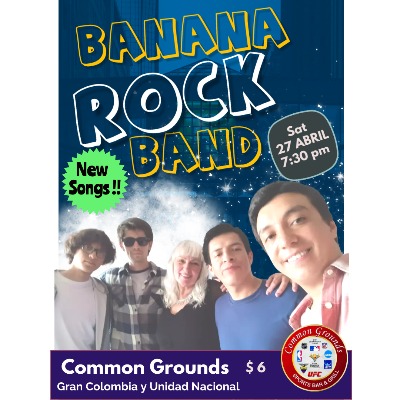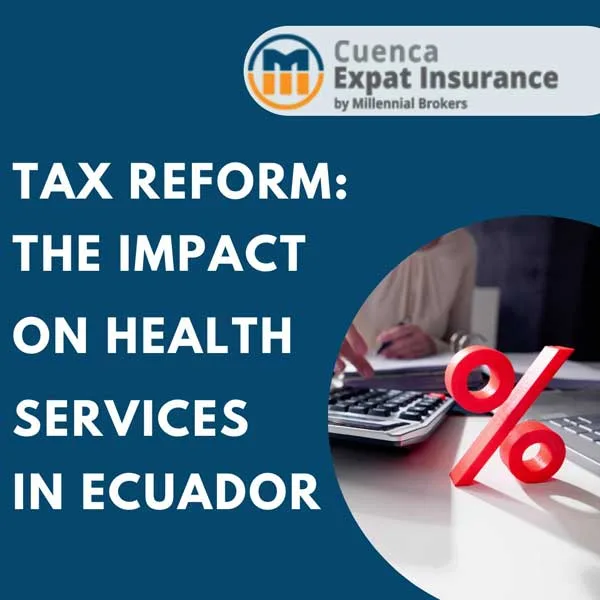How did Ecuador become the ‘Banana Republic’? It’s a story of ambition fulfilled by one man
By Calvin Spinks
Ecuador owes Clemente Yerovi Indaburo a debt of gratitude for establishing the original “Banana Republic,” and making the country number one in banana exports.
Between 1948 and 1950, Yerovi served as Minister of Economy in the government of President Galo Plaza, who, after an extended era of political instability in the country, made it a priority to increase Ecuador’s agricultural production. Yerovi is better known for his service as interim president for seven months in 1966.

Clemente Yerovi
Yerovi’s contribution to Ecuador was recognized in 2019 when his grandson,James Neale, received an award from the Association of Banana Exporters of Ecuador (AEBE) recognizing his achievements. Speaking at the World Banana Congress in Guayaquil, James said that Clemente’s “ambition and dream had finally been fulfilled.”
Neale added: “It suffices to say that it was during his brief time in the presidency and on his initiative that this country became the international leader in the export of bananas, a position it still holds.”
Yerovi had an innate connection to the agricultural fields of Ecuador’s coast. His mother’s family-owned steam-shipping companies that plied the Guayas River near Guayaquil, carrying produce to port. As a young man, Clemente had been a leader of the Farmers’ Association of Los Ríos and the Coastal Agriculture Chamber and, during his tenure at the Ministry, he defended what he had faith in: that the country could plant bananas and compete successfully with the crops in Central America.
As it turned out, Ecuador’s cause was greatly assisted during the period by a series of devastating hurricanes that wiped out most banana production in Nicaragua, El Salvador and British Honduras (today’s Belize).
Neale also credited his grandfather’s determination to the lessons he learned from his own father, Pobiter Juan Yerovi. At the end of the 19th century, Pebiter, a Spaniard, led a bitter fight in Spain’s national parliament to legalize flush toilets. Opposed by the church and much of the Spanish aristocracy, toilets were considered by the clergy to be “contraptions of the devil, unworthy of a place in the homes of civilized Christian people.”
Although Pobiter won his fight for toilets and Spaniards are still flushing today, he became the object of scorn as well as a target for chamber pot “street-dumps” from upper-floor windows and balconies of Malaga homes. After resettling his family in Ecuador in 1911, he left alone for the U.S., and lived for three years in north Florida, near Sopchoppy, a half-hour’s drive from Tallahassee, before disappearing for good into a large swamp known as Tate’s Hell.
Historian Melvin Hoyos says that Plaza and Clemente Yerovi were daring visionaries in their agricultural expectations. “What was innovative about this story was the way in which Ecuador literally catapulted onto the banana scene, going quickly from small exporter to becoming the world leader.”
A few months ago, Hoyos began the research for a project that will establish the Museum of Ecuadorian Bananas.

Ecuador is the world’s top exporter of bananas.
The museum is a dream come true for Eduardo Ledesma, president of the Ecuador’s banana exporters. He wonders, “Why Ecuador does not already have a banana museum, if it is the country’s most representative product?”
He says that the plan is to establish the museums in one of the old homes on Calles Panama or Mendiburo, in the center of Guayaquil. The municipality plans to set up a network of museums, including one devoted to cocoa in the neighborhood. AEBE plans to present a proposal for the museum to the city council.
“People think that bananas are cut, put in a bag and exported,” says Ledesma. “But the history of the banana business is more complicated than that and there were many problems along the way. Among them were establishing reliable shipping schedules so the fruit did not rot on the docks and then, the introduction of cardboard boxes that meant less handling by stevedores. After that, the use of refrigerated containers allowed for longer trips and delivery times.”
Banana researcher Ana Lema credits the development of the industry to the vision of entrepreneurs who emerged after the decline of cocoa production in Ecuador. “Their enterprise and innovation were crucial,” she says. “Luis Noboa established large banana plantations and built warehouses at the ports in Machala and Guayaquil. Segundo Wong Mayorga opened the trade route to the Chinese market while Simón Cañarte bought unneeded American war ships after World War II and converted them for shipping. These are the people who built the industry and made Ecuador number one,” she says.
Lema adds that one massive plantation in Guayas Province, developed by United Fruit Corporation in the 1950s assured Ecuador’s place at the top of the international banana business. The farm consisted of 42,000 hectares and employed more than 15,000 workers.
In his book Empresarios Ecuatorianos del Banano (Ecuadorian banana entrepreneurs), Lois J. Roberts reports that the first fruit exported by Ecuador left from the farms of the Valdez family, which planted sugar cane and built a sugar mill in 1880. It cultivated the Gros Michel banana variety in plots of between 15 and 30 hectares on the sugar cane plantations. The Valdezes increased production at the turn of the 20th century following the devastation of the cocoa crop by Witch’s Broom disease.
In the 1970’s, the Panama disease killed off the Gros Michels variety and saw the introduction of the Cavendish banana, which continues to dominate the market today.
When President Plaza took power in 1948, Ecuador was exporting 3.8 million banana clusters (figures were not yet expressed in metric tonnes), according to AEBE. In 1952, they reached 16.7 million; a 421% growth.
In 1948, Ecuador ranked 27th internationally in banana exports. By 1951, it ranked first.
In 2022, the country sold 6.96 billion metric tons of bananas worth 3.2 billion dollars, which represents about 30% of the world’s export market. Bananas also remain the country’s main non-oil export product. The sector is estimated to generate 220,000 jobs.
As of the end of 2022, 182,436 hectares of banana plantations were registered with the Ministry of Agriculture.


















